Pottery and golf might not seem like the most obvious pairing, but in the town of Shigaraki in Shiga Prefecture, they coexist in a way that feels surprisingly natural. Come with me to learn how this community is taking a fresh look at regional tourism, blending cultural traditions with outdoor recreation.
Mindful travel through pottery and sport
Shigaraki lies at the southern tip of Shiga Prefecture and is now part of Koka City. Revered as one of Japan’s six ancient kiln sites, the area has been a ceramic-producing center for over 800 years. If pottery is in Shigaraki’s DNA, then golf is close behind. During the bubble era (from the late 1980s to the early 1990s), its location within easy reach of Osaka and Kyoto drew investors, and today the town boasts 11 golf courses.
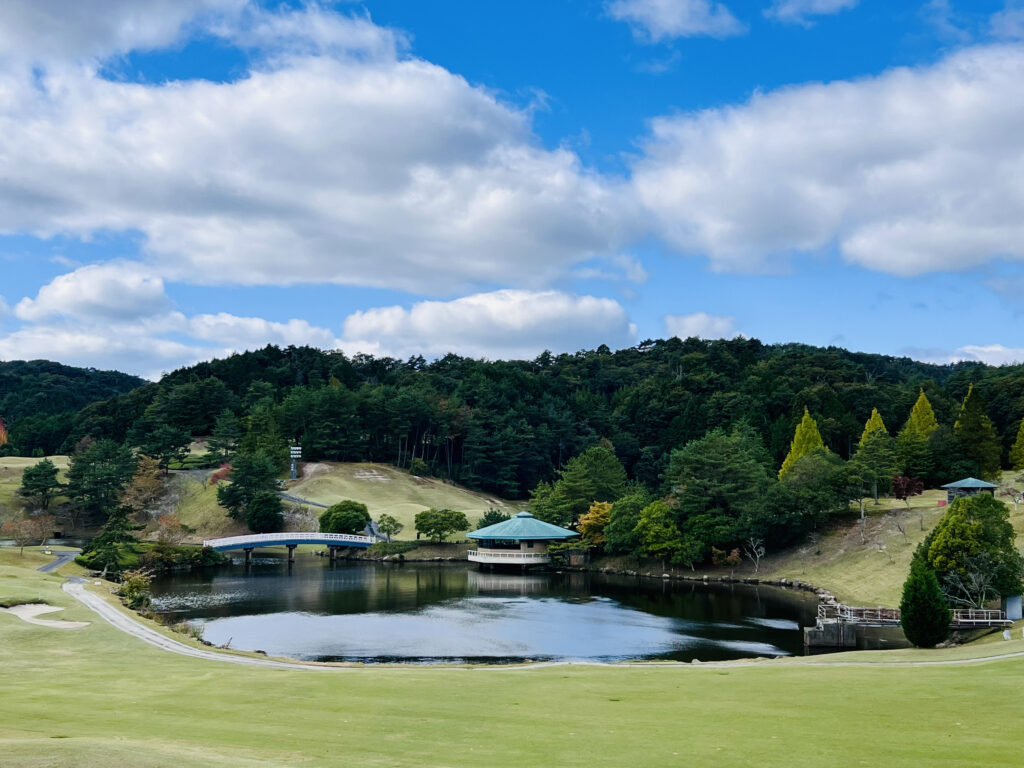
In recent years, mindfulness—being fully present in the moment—has gained wider recognition. Pottery encourages calm and contemplation, while golf requires strategy and physical focus. Different as they are, both invite a deep sense of awareness and presence. Mindful tourism embraces this mindset, emphasizing sustainable travel, cultural respect and well-being—and as I discovered, Shigaraki delivers on all fronts.
The Rose Golf Club: A picture-perfect place to play and stay
My charming guide was Atsuko Furutani from the Shigaraki Tourism Association. “I was born and grew up in Shigaraki. It’s a small, nature-rich town where you can greet anyone. I truly love it here!” she said. That palpable pride and joy seemed to ripple through every part of my visit.
Atsuko told me she’s a keen golfer, and while I don’t play golf myself, my husband is a big fan of the game. Until now, his golf trips have always been solo, but that could change: Some of Shigaraki’s courses offer attractive accommodations well-suited for a couple’s retreat.
Atsuko took me to the Rose Golf Club, where the deputy manager, Rika Kakuta, showed us around. “We’re a little different from your typical golf club,” she explained. “We have alpacas on-site, craft beer brewed right on the course and hydroponic vegetables served at our restaurant.”
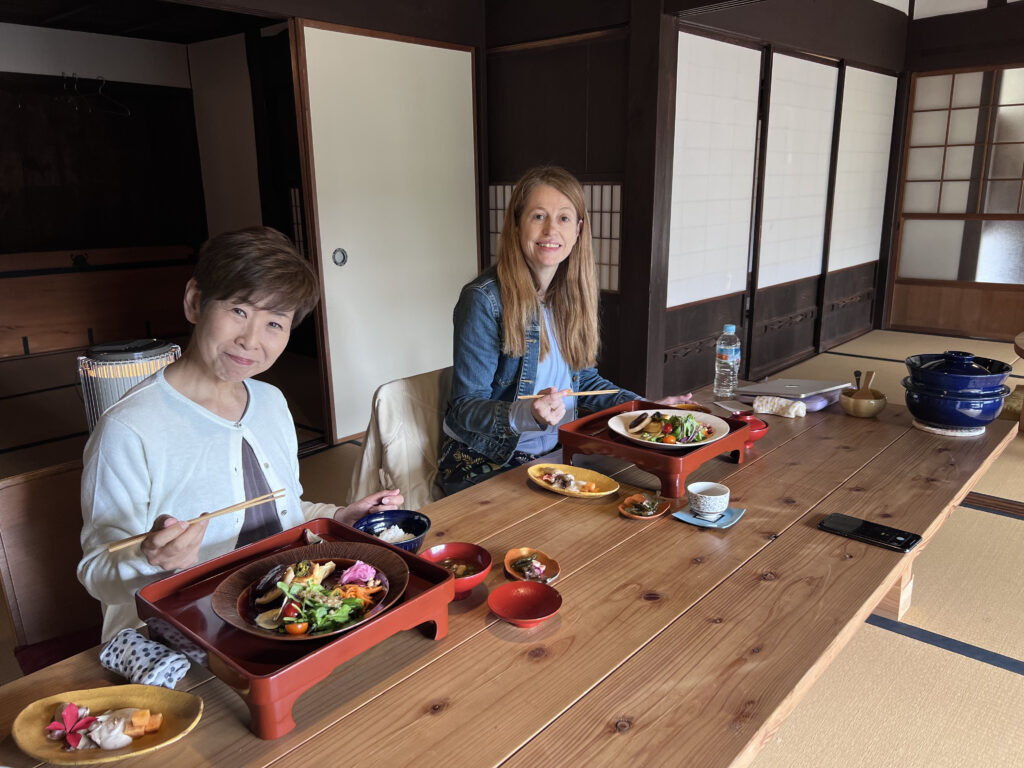
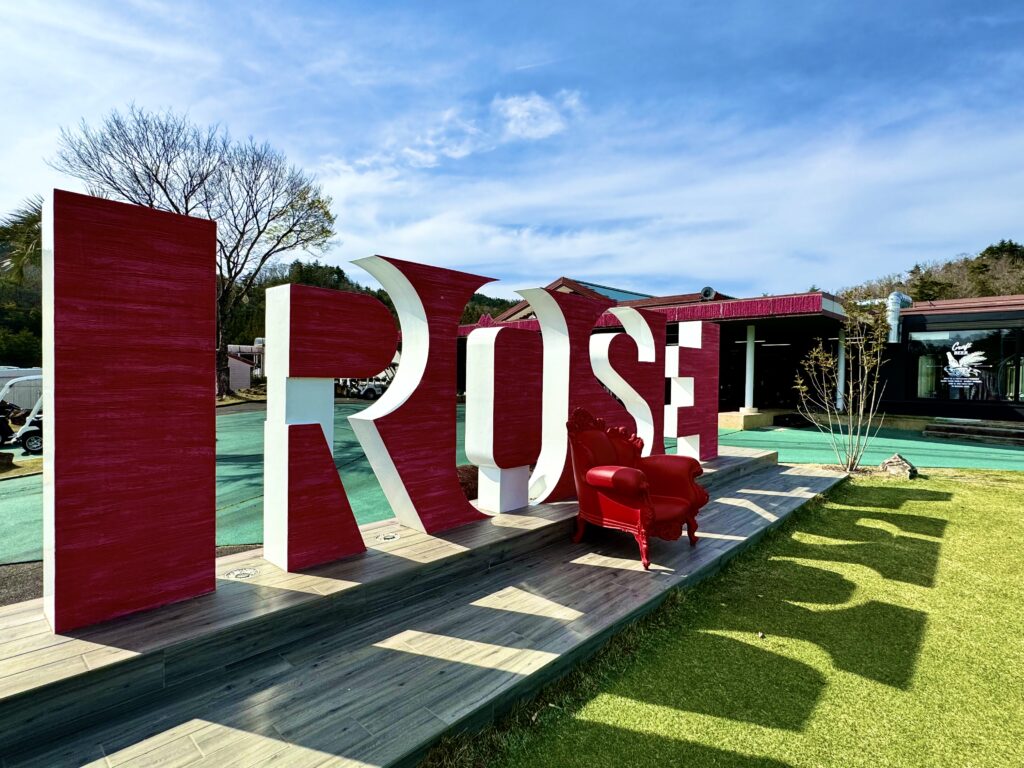
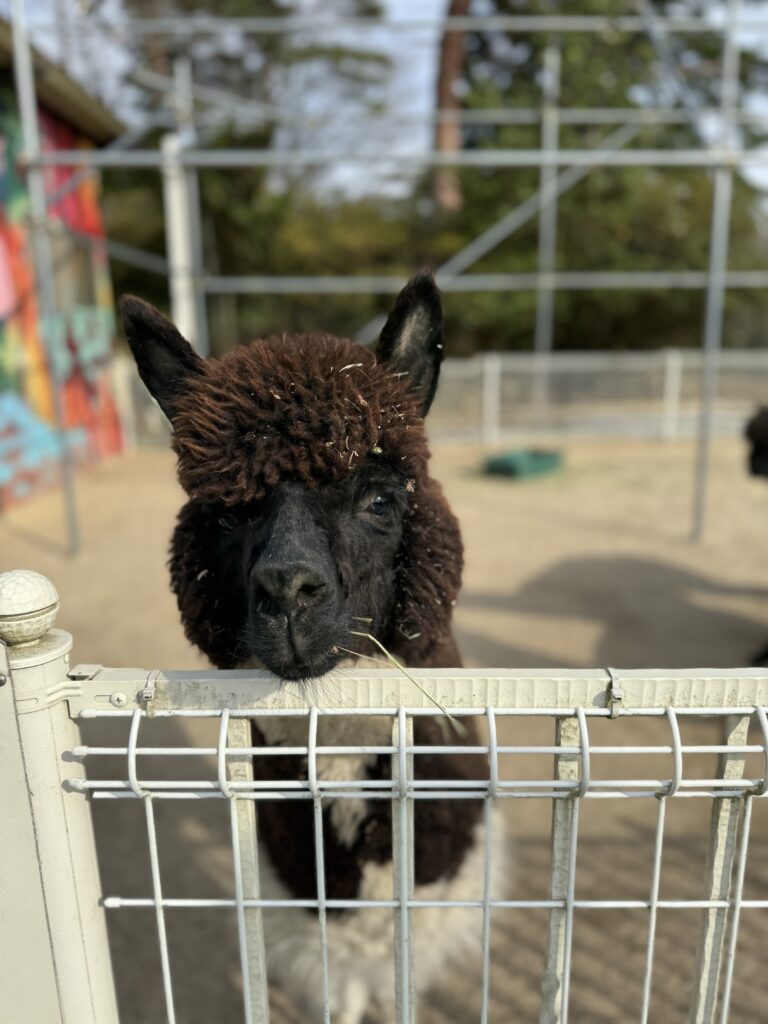

Inside the clubhouse, I found vintage cars and bright art installations—perfect for Instagram! After a visit with the resident mop-topped alpacas, I checked into The Rose Village, the club’s accommodation. My cozy cabin had a wooden deck, where I enjoyed a BBQ dinner alfresco. As Rika mentioned, Rose Golf Club isn’t your traditional course—and that’s exactly its strength. It’s designed to appeal to golfers of all ages and their non-golfing companions, with a strong focus on lifestyle and design.
An exceptional art museum, blending in with nature
The next morning Atsuko and I set off to explore the town’s pottery and cultural heritage. Shigaraki is full of surprises and one of them is the Miho Museum, a world-class art facility set in the hills around the town. Designed by the eminent architect I. M. Pei, the building is almost as striking as the collection inside—from ancient artifacts to Japanese ceramics. The museum is named after the late founder Miho Koyama, an art lover and one of Japan’s wealthiest women. After wandering around the galleries, Atsuko and I enjoyed a delicious lunch at the Peach Valley restaurant, which uses locally-grown vegetables.
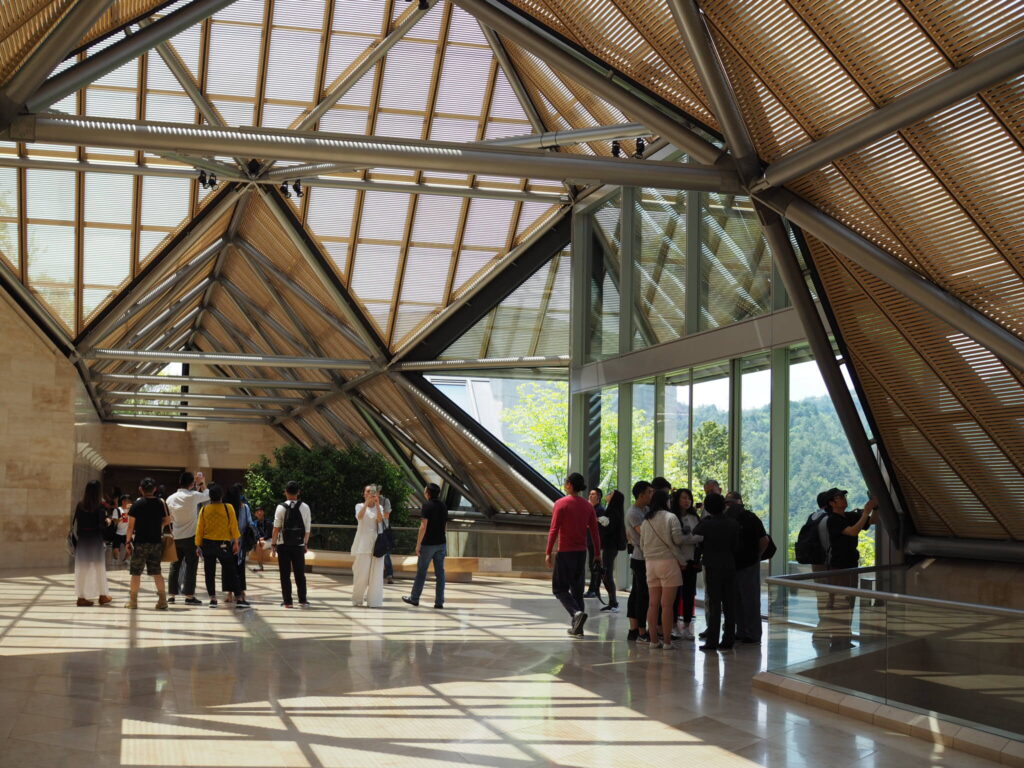
Meet the tanuki: Shigaraki’s beloved good luck charms
Driving back into the town, we saw tanuki galore. The cheerful raccoon-dog statues are everywhere in Shigaraki, and I couldn’t resist taking lots of photos. First made by a local potter in the 1950s, the ceramic figures were part of the welcome for Emperor Showa during an official visit to the town. They have since become good-luck mascots all over Japan. The word “tanuki” can also mean “to surpass others”, which might explain why you’ll spot them outside so many shops and restaurants hoping for prosperity. While they’re a relatively recent addition to Shigaraki’s ceramic tradition, the tanuki are now a beloved symbol.
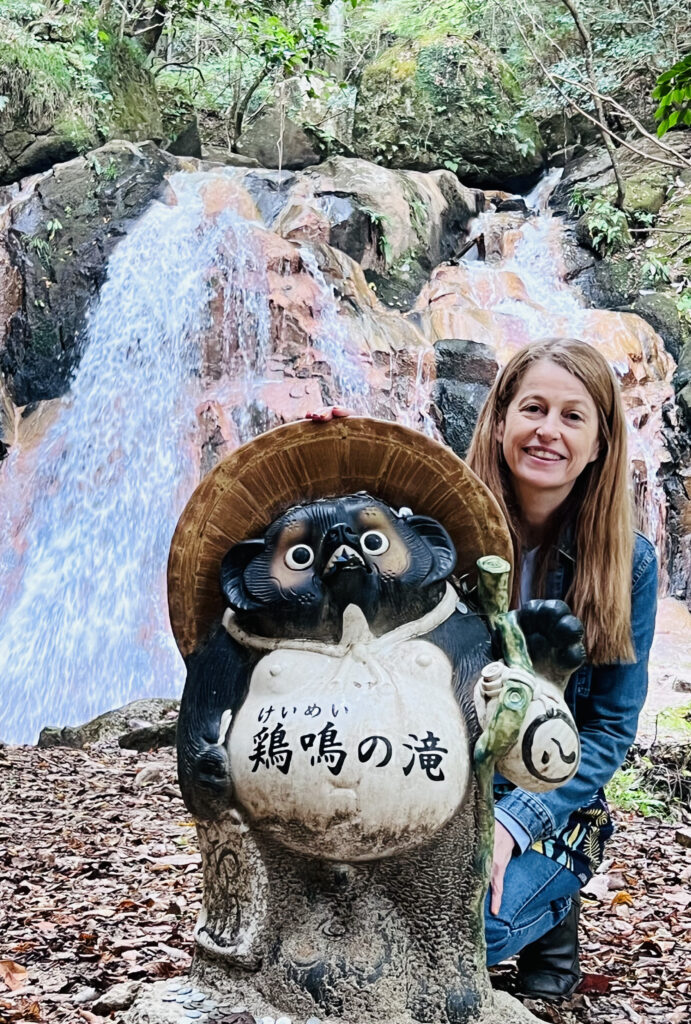
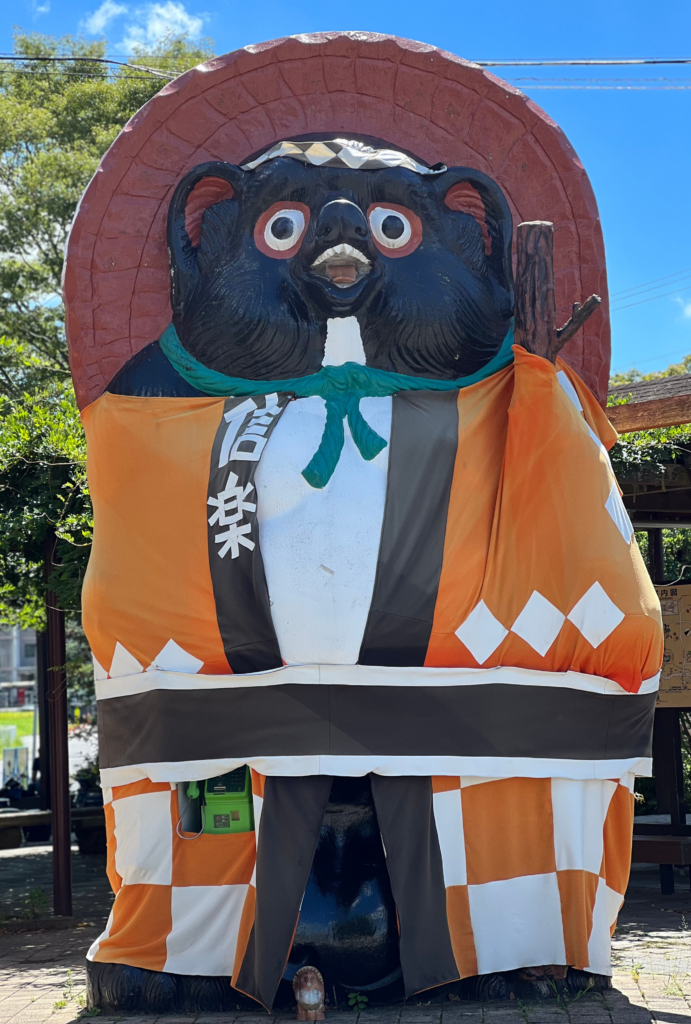
Tanuki have even been getting into the golf scene! Local artisans have put a creative spin on the roly-poly creatures by crafting golf-themed figurines and trophies. From playful tanuki striking a pose with a club, to trophy cups awarded at local tournaments, these pieces offer a unique way to mark a win—or perhaps to bring luck for the next round of golf.
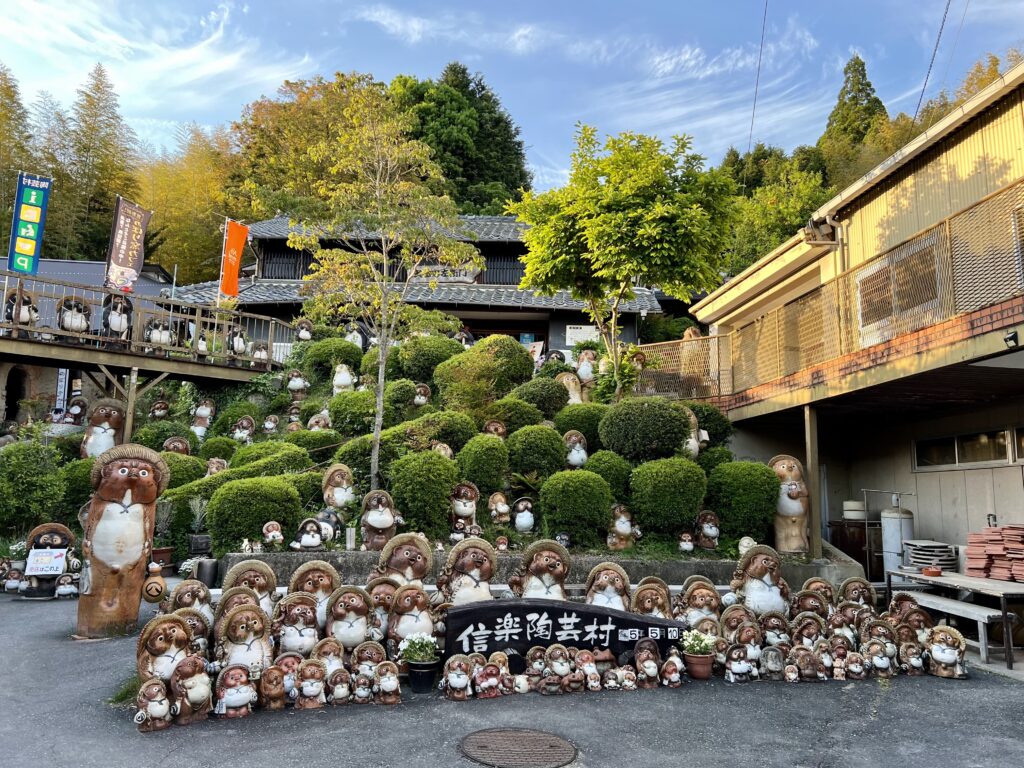
Exploring pottery culture—enduring traditions and contemporary creativity
Our next stop was the Shigaraki Pottery Village, where we met Tadashi Okuda, head of a family kiln that’s been going since 1888. He’s the fifth generation to run the business, supported by his children and grandchildren. This youthful great-grandfather feels Shigaraki is a great place to live and work. “The area is full of nature and local crafts and the people are all so warm and welcoming!”
Tadashi has long been involved in promoting local tourism, and this experience shows. Shigaraki Pottery Village feels relaxed and open, whether you’re browsing the ceramics, trying pottery or taking tea at the innovative Noborigama Café. Tucked inside a former climbing kiln, the café is a true piece of living history.
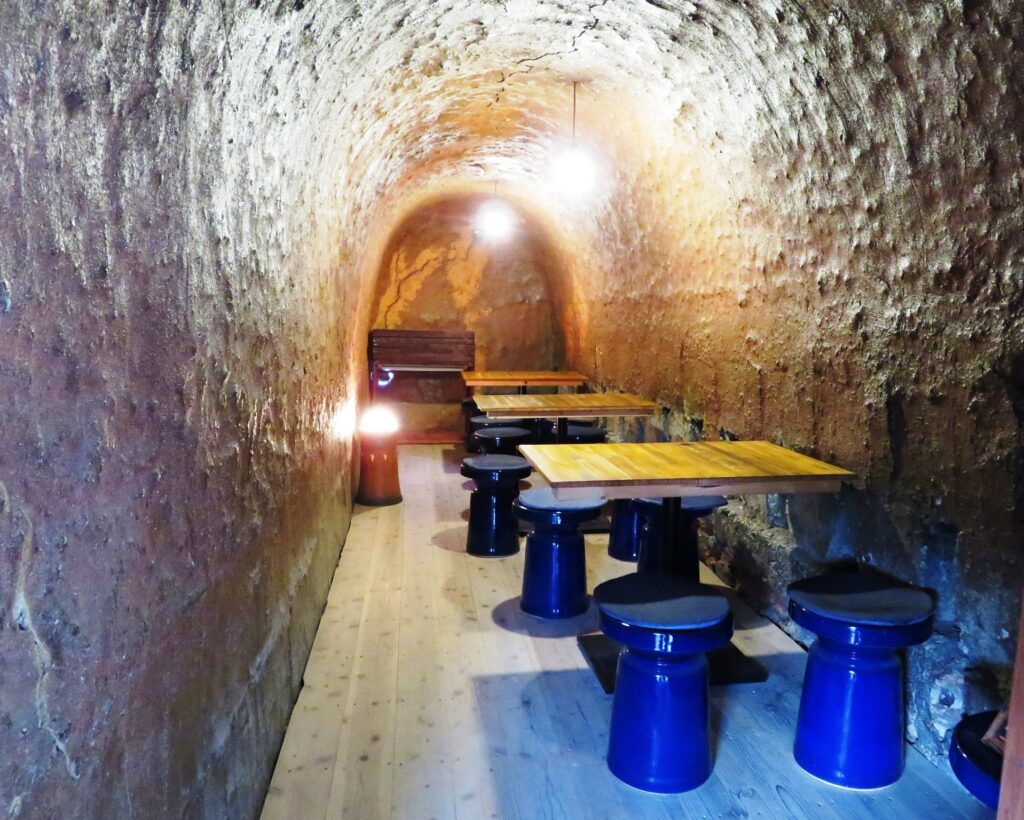
We also dropped by Tohbo Jun, the studio of artist Junko Kuzuhara, who’s been carving out her own niche in the world of ceramics. Another Shigaraki native, she married into a prominent pottery family before eventually turning to her own creations. Her signature pieces include whimsical figurines inspired by Japanese culture, such as Hina dolls for Girls’ Day, along with beautiful ceramic jewelry, which she started making in 2014.
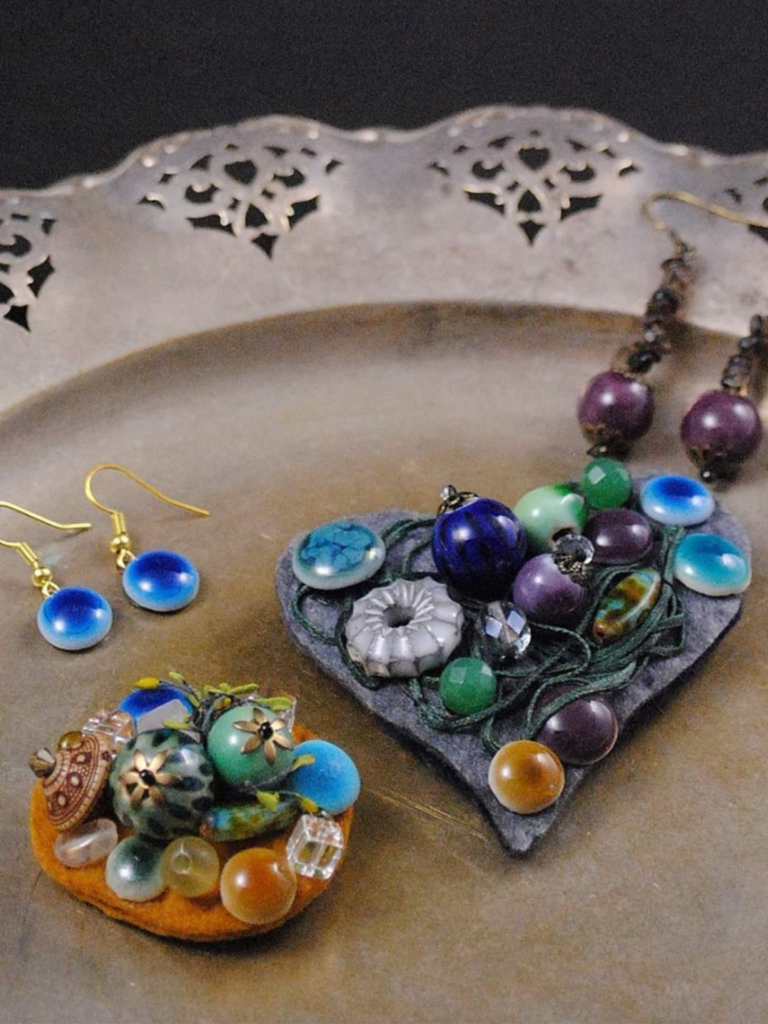

“I experimented for some time, trying to reduce the weight of the clay without making the pieces hollow—which makes them more fragile. Eventually, I developed a refined clay that allowed me to create light, beautifully-colored accessories,” she told me. “One of my most cherished creations is a series of accessories made using mineral pigments I encountered in Italy in 2018, applied to Shigaraki clay.”
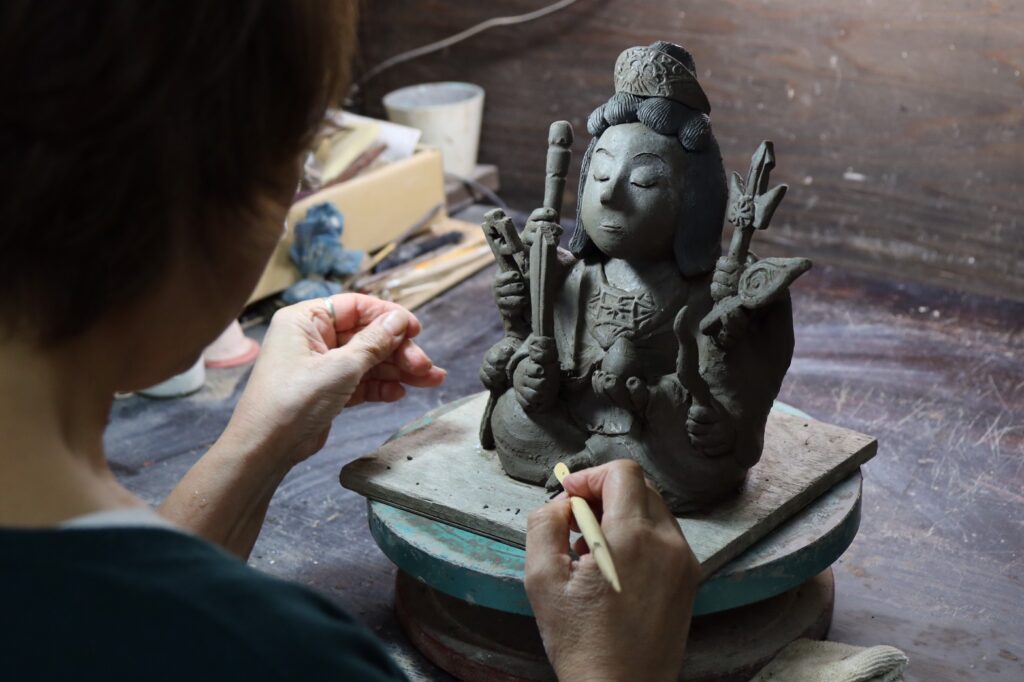
Rise and shine next to one of Japan’s leading golf courses
Then it was off to my accommodations for the night at Hotel Lake Villa near the Tarao Country Club. Tarao has earned a reputation as one of Japan’s top-tier golf destinations and hosted the U.S. Open Final Qualifying event in May this year. It will also be the venue for the Japan Open Golf Championship in 2026. The Lake Villa is a peaceful hotel with a laidback resort atmosphere. The hotel offers both modern rooms and log cabin-style suites, along with activities from tennis and karaoke to a relaxing onsen bath.
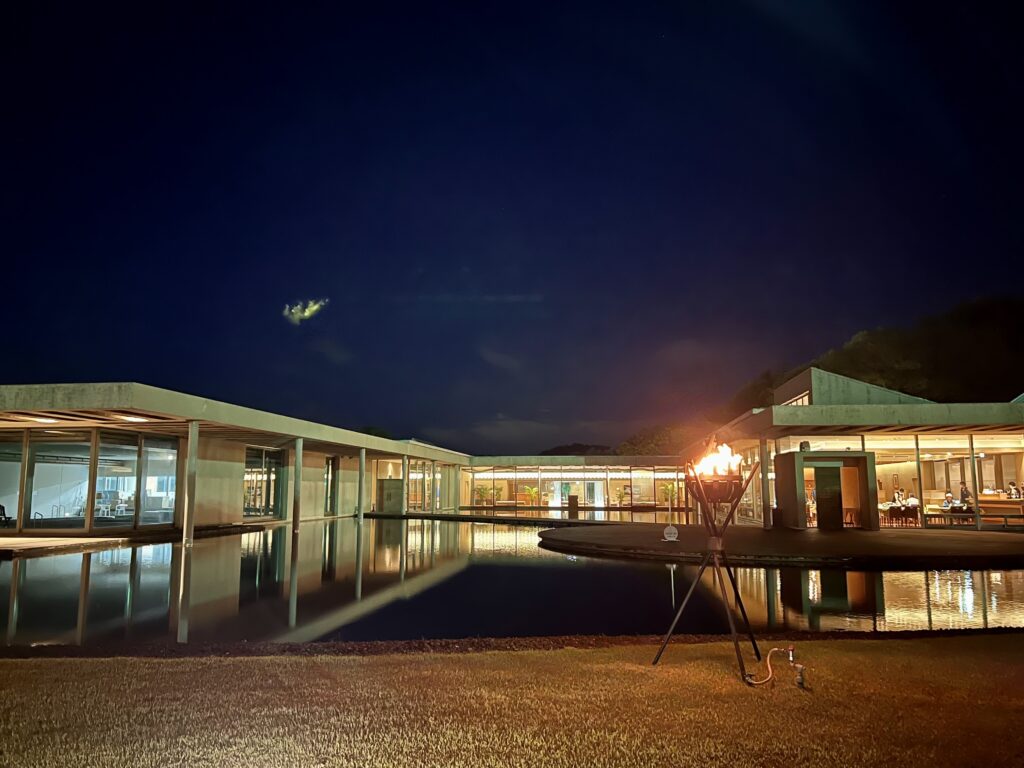
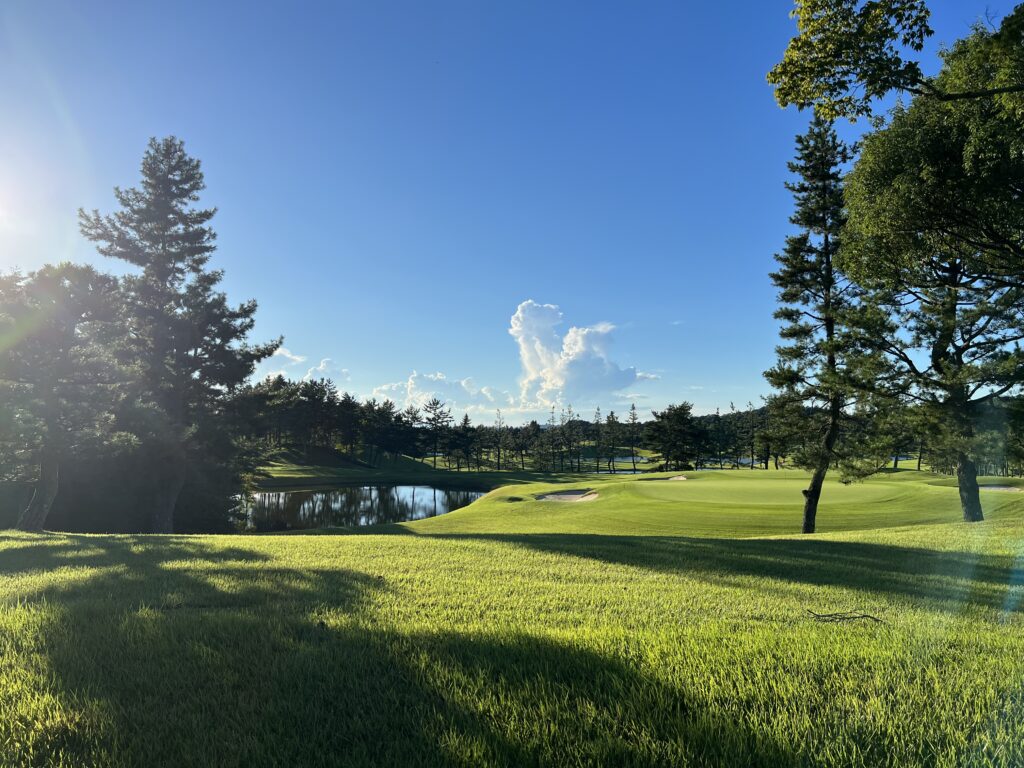
Feeling the local pride at the Daily Shigaraki Country Club
On my last morning, Atsuko took me to the Daily Shigaraki Country Club, where we were shown around by the friendly Assistant Manager, Yoshihiro Nonaka. Touring the facilities in a golf cart, we were treated to some amazing views of the greens and photogenic water features. He also pointed out the club’s dome-style accommodation—a fun and economical option for those wanting to extend their visit.
Born and raised in Shigaraki, Yoshihiro has been working at the club for 16 years. “The relationships we build with people here run deeper than in most service industries,” he said of his role. “I get to interact with familiar customers every day, and our team truly enjoys providing warm, genuine hospitality.” Yoshihiro took up golf himself a few years ago and is enjoying honing his game in his beloved hometown.
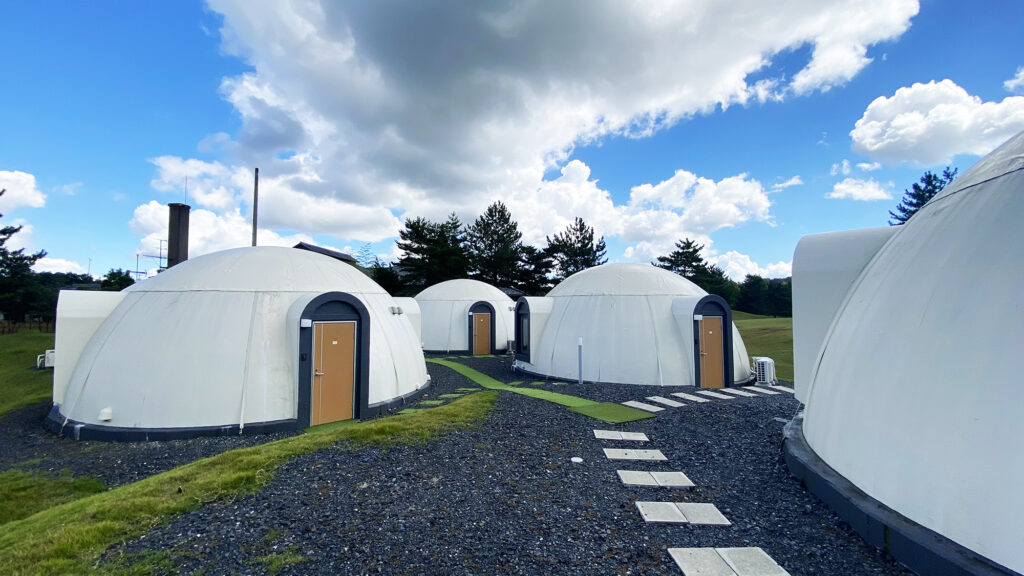
Not just pottery—Shigaraki’s tea heritage dates back over 1,000 years
There was just time for one more surprise. While pottery arguably put the town on the map, I didn’t know that Shigaraki’s history with tea runs just as deep. In the ninth century, a Buddhist priest brought back tea seeds from China and planted them in the Asamiya district, where the soil and climate suited the tea perfectly.
Our final stop was Yamamotoen, a family-run tea producer founded in 1870, where visitors can take a guided tour of the fields and learn how the leaves are processed. At their With Tea café, Atsuko and I enjoyed some Asamiya tea served in beautiful Shigaraki ware, along with two of their popular desserts: a luscious matcha cake and a fragrant hojicha pound cake. It was the perfect way to round off my time in Shigaraki, before hugging Atsuko goodbye and heading home.
I’m already planning a return trip to Shigaraki—this time with my husband. While he’s off hitting the links, I’ll be browsing the galleries, taking a pottery lesson and checking out the cafes. But whether it’s tee time on the green or tea time in a cafe, I know I’ll be meeting Atsuko again!

Access and travel tips
Shigaraki is less than 90 minutes from Kyoto. Take the JR Special Rapid Service to Kusatsu Station, then change to a local JR service for Kibukawa Station before making a final transfer to the scenic little Shigaraki Kogen Railway. Enjoy the views of the countryside and look out for tanuki figures lined up on the platforms of the stations you’ll pass on the short ride to Shigaraki.
For more information, including assistance with golf reservations, contact the Shigaraki Tourism Association at the link below.
